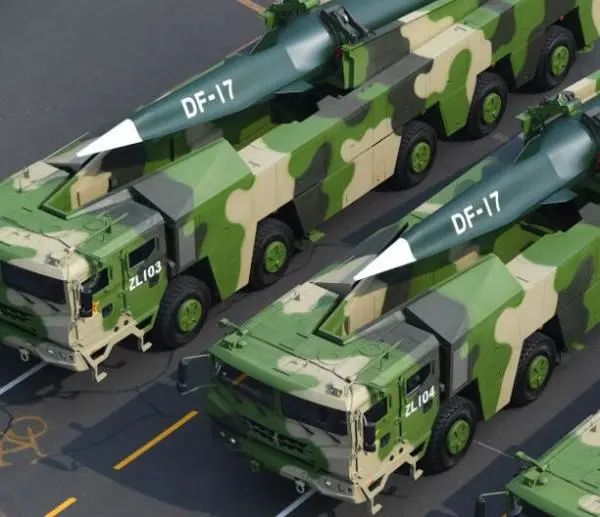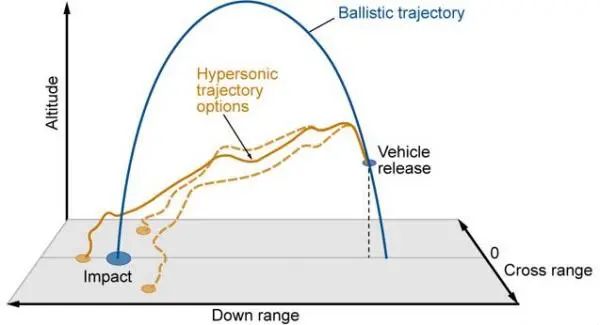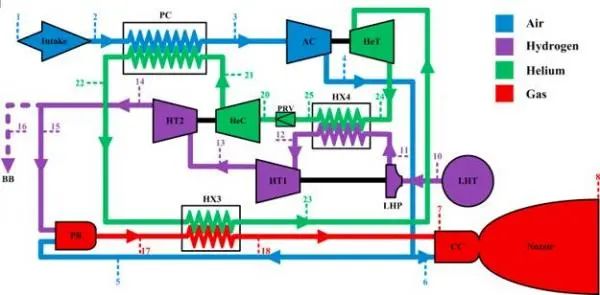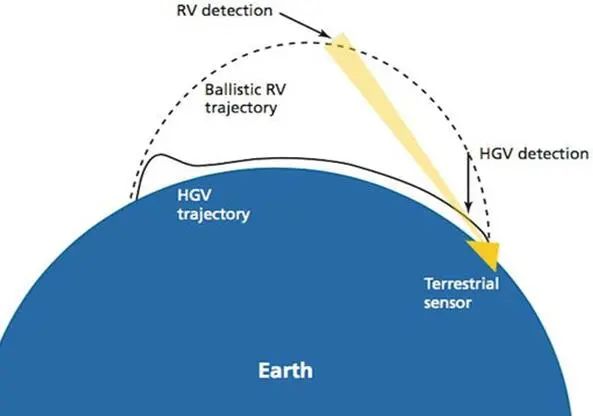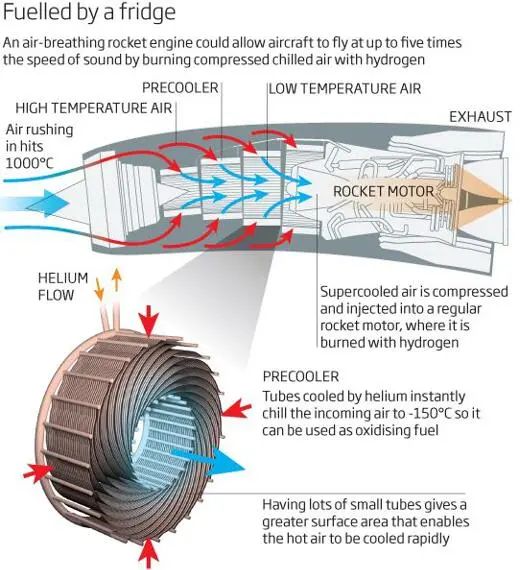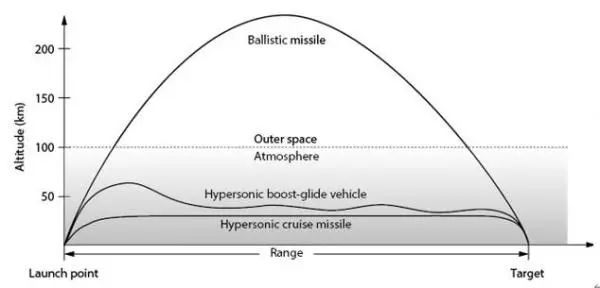(Machine translated) The Institute of Mechanics of the Chinese Academy of Sciences 中国科学院力学研究所 quietly released a message that 范学军 Fan Xuejun’s team achieved a continuous 600-second run time in a ground test of a super-combustion ram engine, breaking the world record of 210 seconds for an American X-51 research aircraft. in 2016, India announced that it had achieved a super-combustion ram-powered M6 high supersonic flight, but the engine worked for only five seconds. Not long ago, the Ministry of Science and Technology announced the second national innovation first prize list, 北航 high supersonic speed strong pre-cooling team won the award, also attracted great attention. The significance of these two breakthrough technologies is immense. Hypersonic speed is at the forefront of aerospace technology. This is also the gray area between aviation in the lower atmosphere and the outer space. In between, the high supersonic speed of flight not only allows the M5-20 to fly at very high speed, but also has considerable maneuverability.
On 70th anniversary of the National Day in 2019, China made a display of the 东风 Dongfeng 17 hypersonic missile, which represents the highest level of hypersonic speed currently available, but this is still the hypersonic glider (HGV for short). In other words, after the missile is propelled to near ground altitude with a rocket engine, it changes attitude and transitions into a hypersonic glide.
Compared to ballistic missiles, HGVs have a low flight altitude, and because of the curvature of the Earth, the ground radar’s detection range is much lower than that of ballistic missiles, and the cruise altitude of the early warning aircraft does not fundamentally solve the problem. Space-based detection in orbit is theoretically not limited by field of view, but conventional missile warning is based on the huge tail flames and initial trajectory of the missile at launch to infer trajectory, HGV still has the tail flames problem at launch, but after switching to glide, it can completely get rid of simple trajectory by its maneuvering capability, making the trajectory of the missile unpredictable. While it is theoretically possible to track with an on-board radar the entire time immediately after detection of launch, tracking of medium-orbit satellites requires a large on-board radar, while low-orbit satellites require a dense constellation and “dynamic-to-active” gapless relay tracking. Infrared photonics tracking not only has similar optical aperture problems, but also faces the problem of detecting faint HGV thermal features in the complex thermal environment of the Earth’s surface. In the foreseeable future, space-based detection will also have insurmountable technical difficulties. Without effective tracking, you can’t talk about effective interception, so the HGV has a higher assault capability than a faster but dull ballistic missile. It is for this reason that HGVs have become the focus of military research in various countries. China has not only the Dongfeng 17, but also the Dongfeng 26, which also has the ability to glide at high supersonic speeds. The Russian “pioneer” is the Intercontinental HGV, which reaches the extreme high speed of the M27. The U.S. is behind, and after a dizzying array of fast-track R&D plans, it’s finally starting to get a bit of a head start. However, the range of the HGV depends on the altitude reached by the booster section or the leveling acceleration in the atmosphere, the former increasing the difficulty of the smooth transition from the abrupt back to horizontal sliding, the latter forcefully twisting the booster section of the ballistics and spending fuel.
Higher up the hierarchy than the HGV is the high supersonic cruise missile. Cruise missiles are an ambiguity-prone designation, which is really an umbrella term for all missiles that are powered at the vast majority of their range, and high-subsonic cruise missiles that sweep the ground are just one type of cruise missile. Most tactical missiles are not called cruise missiles because the rocket engine only works for a short time and the main part of the range is gliding flight. This is true not only for ballistic missiles, but also for air-air, air-ground and even anti-tank missiles. The only common missiles are anti-ship missiles and land-attack cruise missiles that are fully powered. The hypersonic missile is called a hypersonic cruise missile (HCM) because it is powered by a super-combustion ram engine.
Compared to the HGV, the HCM has a larger range and more difficult ballistics to detect, and all of the HGV’s energy comes from the booster stage rocket engine. A rocket engine with its own oxidizer always is heavier than a jet engine that can suck oxygen out of the air. In the case of a kerosene-liquid oxygen rocket, the ideal combustion air-to-air ratio is 15:1, i.e., each kilogram of aviation kerosene requires 15 kilograms of oxygen to burn completely. You can save volume with liquid oxygen, but the weight is still the same. If oxygen could come from air, in theory, all of that 15 kg of liquid oxygen weight could be diverted to kerosene, with an increase in range .
The longer operating time of the jet engine also means that there can be longer acceleration times, the same top speed can be reached with less initial energy, and the same top speed can be maintained for longer. More power from a jet engine also means allowing for more maneuverability, since maneuvering is about expending energy. Unlike HGVs that can only do relatively simple lateral maneuvers, HCMs can do more complex maneuvers and even evasive attacks.
HCM’s boosters are simply accelerated to ignition speed for super-combustion ramming, so the booster requirements are greatly reduced, helping to reduce the size and weight of the booster. A smaller booster means a smaller thermal signature at launch, and the super-combustion ram itself has a much smaller thermal signature than the rocket engine, meaning that the HCM is virtually impossible to capture by space-based probes, further enhancing its ability to resist early warning. High supersonic missiles are already difficult to intercept, and interception without warning is almost impossible. The HCM is the ultimate hypersonic weapon. The U.S. had wanted to develop HCM directly in one step, but was stuck on the power issue; although the X-51 reached 210 seconds, it was a highly optimized test condition, and its operating time was too short to be practical. When the United States slowly progresses, China quietly caught up, and at once made a breakthrough in two key technologies.
Of the various known aerodynamic forces, rocket engines have too short an operating time for conventional turbojet engines to break above M2.5, and conventional sub-combustion ramming is difficult to break above M4, as the increase in drag is already faster than the increase in thrust. Only super-combustion ramming can be used for HCM, which is both a ramming engine and a jet engine, unlike the turbo-mechanics of a conventional turbojet engine. A super-combustible punch is a hollow tube in appearance, but there’s a lot more to this hollow tube. In contrast to sub-combustion ramming, the inlet compression, combustion and formation of thrusts in super-combustion ramming are carried out at supersonic speeds. Compared to sub-combustion ramming which requires lowering the intake to subsonic speeds and then accelerating the gas to supersonic speeds, the drag is greatly reduced. However, under supersonic conditions, not only is the combustion difficult to stabilize, but there is also the problem of high temperatures, which can easily exceed the temperature resistance limit of the structural material. The main contribution of the FAN team is the active cooling technology of the hot end components.
Engines powered by combustion usually have some sort of cooling. Automotive engines are essentially liquid-cooled, with the circulating coolant taking heat away from the engine and sending it through the radiator into the air; jet engines rely primarily on air flow and gas ejection to take heat away. But active cooling spreads under the surface of the hot end engine components (in the case of super-combustion ramming, that’s the combustion chamber and nozzles) in capillaries that pass into the hydrocarbon fuel, taking heat away in the flow and lowering the surface temperature. The actual temperature of the hydrocarbon fuel after heat absorption rises above the ignition temperature, but only rises due to the anaerobic environment and does not burn. However, when hydrocarbon fuel is injected into the combustion chamber, it is naturally depressurized on the one hand, and mixed with oxygen in the incoming gas and burned naturally on the other, which is more efficient and reliable than the usual ignition.
Hydrocarbon fuel is an advanced form of fuel oil, which can be easily converted to liquid hydrogen for greater heat absorption and combustion efficiency. However, liquid hydrogen is more complex to prepare and store than hydrocarbon fuels, and is less stable at room temperature and pressure. Fan Xuejun’s team uses hydrocarbon fuel, which is less expensive and more stable.
The rationale for active cooling isn’t complicated and the benefits are obvious, but the devil is in the details. The flow of hydrocarbon fuel in capillaries requires consideration of blockage. The distribution of capillaries is of great importance, it is not necessary to be too fine, cooling is not achieved if too large. The bigger problem is that in the flow network, the preferential flow makes the flow distribution deviate from the expected uniformity, and in a bundle of seemingly similar tubes, the flow rate inside the tubes may not be even. Midway interconnection between paths can be made up with bypass flow when part of the path is blocked, but further complicates the problem of achieving optimate flow. The problem of gas resistance after the fluid is heated and vaporized has to be avoided also.
Fan Xuejun’s team not only solved a large number of theoretical and design problems, but also built a large test set in 怀柔, solving engineering problems and bringing the research results to a high level of technical maturity.
Fan Xuejun received his PhD in Princeton and became a researcher and PhD director of the Institute of Mechanics, serving as an expert in the professional group of delivery technology of a certain ministry, an expert in the national major special fuel group and the chief technology of a certain major project. He took the lead in conducting research on active cooling engine technology in China and built the first set of active cooling technology comprehensive test platform at the 怀柔 base of the Institute of Mechanics, which is at the international leading level in technology. He led the development of China’s first active cooling combustion chamber and passed a long test. In recent years, the company has published more than 50 papers in domestic and foreign magazines, more than 100 conference papers and national defense technical reports, and applied for more than 30 invention patents and has authorized nearly 20 inventions. But this isn’t the only top team in China’s hypersonic research army; 北航 Beihang’s hypersonic strong precooling team is another.
Active cooling technology improves the heat resistance of the hot end components of the engine, which can be further improved by strong pre-cooling of the intake air. Not long ago, the SABRE engine in the UK achieved strong pre-cooling, cooling an intake of 1000 degrees to minus 150 degrees in 0.01 seconds. That’s quite an achievement. The specific techniques and applications of the 北航s team were not published, but are of the same nature.
Strong pre-cooling not only dramatically increases the high temperature resistance limit of the hot end components of the engine, but also drastically reduces the volume of air intake and increases the air intake density. This results in a significant reduction in the volume flow of the compressor at the same inlet volume flow, or a significant increase in the oxygen content of the air stream at the same compressor volume flow. The former can be equated with an increase in the upper limit of air inlet velocity, making the same engine technology work at higher speeds; the latter is particularly important for very thin air at very high altitudes, allowing jet engines to work steadily at higher altitudes, reducing air frictional resistance, otherwise it would be necessary to use heavy, costly and short working time of the rocket engine. SABRE is exactly that.The full name of SABRE is Synergetic Air Breathing Rocket Engine, which means Accompanying Aspirated Rocket Engine. This is a new concept hybrid engine for the horizontal take-off, single-stage, orbiting space shuttle, which uses strong pre-cooling to maintain the working state of drawing oxygen from the air all the way to M5 and ultra-high altitude, before being transferred to rocket power and into space flight.
Specifically, the incoming air, after being strongly pre-cooled in a pre-cooler (PC), reaches high pressure through an air compressor (AC); part of it enters the combustion chamber (CC), where it is mixed with the pre-fired hot, oxygen-poor, hydrogen-rich gas and burned to generate thrust through a nozzle; most of the air enters the pre-fired chamber (PB), where it is mixed with the hydrogen and burned to heat helium gas. The helium gas is heated to expand and drives a helium turbine (HeT) to drive the gas press. The helium gas, which is still very hot after being cooled down, is heated and vaporized by a heat exchanger (HX4) to form a high pressure, which drives a hydrogen turbine (HT1) to drive a liquid hydrogen pump (LHP) to pump liquid hydrogen from a liquid hydrogen storage tank (LHT). There is still enough hydrogen pressure left to continue to drive another hydrogen turbine (HT2) that drives a helium refrigeration compressor (HeC) for the pre-cooler, just as a Freon compressor in a refrigerator supplies refrigerant. In fact, helium is the equivalent of Freon here.
SABRE’s thermodynamic cycle is complex and sophisticated; SABRE was not originally designed for super-combustion ramming; the use of aspirated rocket engines avoids the problem of super-combustion ramming, and high supersonic speeds within the atmosphere are only a transitional phase, providing the highest possible starting speed and altitude for rocket powered flights outside the atmosphere. But properly simplified, SABRE’s thinking can also be applied to super-combustion ramming. For example, by eliminating the helium loop, the fuel pumped out goes directly to the pre-cooler and hot end cooling system, heating gasification generates high pressure, and the driven turbine drives the fuel pump directly. This way, even the pre-combustion chamber can be eliminated.
Active cooling and strong pre-cooling are both thermal management techniques for super-combustion ram engines. People often focus on the combustion stability of super-combustion ramming, which is indeed a huge technical challenge, as tough as a controlled explosion, but thermal management is an equally huge challenge. China hinted at a fairly high level of technical maturity in super-combustion stamping technology at the landmark Xiamen International Conference in 2017. Thermal management technology has also now reached a high level of technical maturity, and what is not publicly available is only a high supersonic flight test of a complete super-combustion ram engine with advanced thermal management.
The significance of the practicality of super-combustion stamping cannot be overstated. Only the appearance of the Dongfeng 17 was made public at the National Day 70 celebration, the range was not announced, and is estimated to be in the 1800-2500 km range. By using super-combustion ramming and changing from HGV to HCM, only a small booster rocket is needed for take-off, and the weight of the large amount of oxidizer used can be converted to fuel, greatly increasing the range. Even accounting for the heavier super-combustion ram engine and auxiliary systems, the increase in range is conceivable. Even if it is not possible to increase the range by a factor of 15, but only by a factor of 5, it will be possible to achieve a range of 9000-12500 km with roughly the same full system size and weight. If the Dongfeng 17 is still just “Guam Express”, then “Super Dongfeng 17” is not just Guam Express, but “Hawaii Express”, “Los Angeles Express”, the military significance is self-evident.
China’s high-tech research and development of military significance has a tradition of secrecy, and the complete super-combustion ramming test with heat management has been carried out or not, and whether it was successful or not, the outside world can only speculate. But one needn’t be too surprised to find out where another innovation award was quietly declared not too long ago, or where a brand new HCM was swooped in at a major celebration.
On the other side of the Pacific, the U.S. tested the successful C-HGB on March 19, an HGV common to all three armies, but still using the first-generation bicone (also known as a spintron), rather than the more advanced multiplier used by Dongfeng 17. On the other hand, the United States Under Secretary of Defense for Scientific Research Griffin, speaking about hypersonic research, specifically mentioned the lack of access to thermal management in the United States, which has reduced the range of hypersonic missiles, which would have reached 3,000 km, to 1,000 km. If China is still a step away from HCM, the United States is yet to cross the midfield. Hypersonic speed is one of the few military-industrial technologies in which China holds a decisive lead, which happens to be the core military-industrial technology that will be critical to future wars.
The Launch of 2020 National Joint Planting of Seawater rice
The Launch of 2020 National Joint Planting of Seawater rice in Qingdao and Weifang, Shandong Province, Qinghai Province and Wenzhou, Zhejiang Province. The launch of the seawater rice was led by Yuan Longping, an academician of the Chinese Academy of Engineering, and his team. This year the national sea rice plantation area will be expanded to 16,400 acres, the team also carried out saline soil transformation of 164,000 acres, and strive to lay out 1.64 million acres of saline land transformation in the country, in order to eventually transform 16.4 million acres nationwide.
Australia announced the biggest shakeup of its foreign investment laws
Australia announced the biggest shakeup of its foreign investment laws in almost half a century on Friday, including giving the government the power to force the sale of a business if it creates a national security risk.
Citing the need to balance economic and national security, Treasurer Josh Frydenberg said all foreign investors will face greater scrutiny when bidding for sensitive assets, regardless of the size of the deal and whether the buyer is private or state-owned.
“Technology has been evolving and our geopolitical climate has become more complex,” Frydenberg said in Canberra. “In fact, the world over, governments are seeing foreign investment being used for strategic objectives not purely commercial ones.”
In one major change, the Treasurer will be given a last-resort power to vary or to impose conditions on a deal or force a divestment after the deal has been approved by the Foreign Investment and Review Board (FIRB). A Treasury document said the power would not be retrospective.
Prime Minister Scott Morrison said compliance would also be tightened, with the government to spend an additional $50 million on enforcement of the rules. A Treasury spokesman told Reuters extra resources would go to the Australian Security Intelligence Organisation (ASIO) as well as the Taxation Office, Department of Home Affairs and Treasury.
Frydenberg did not provide details of which business sectors would be captured by the national security test and subject to FIRB’s scrutiny, but he did give some indication of areas of interest.
The definition would likely cover telecommunications, energy and utilities firms, the defence supply chain, and businesses that collect, store and own data deemed critical to Australia’s national security and defence, he said.
Scott Phillips, a partner at M&A law firm Arnold Bloch Leibler, said it was crucial the categories be carefully defined at a time the Australian economy has been hard hit by the coronavirus pandemic.
“While sensible on the face of it, these changes carry a very real risk of discouraging much needed, national interest investment as Australia heads into our first recession in 29 years,” Phillips told Reuters.
Under current laws, most private investments under A$275 million ($190.8 million) are not screened by FIRB, while the threshold is A$1.2 billion for companies from countries such as China which have free trade agreements with Australia. The threshold is zero for state-owned enterprises.
The government plans to release a draft of the proposed changes by next month for legislative debate with planned implementation on Jan. 1, 2021.
Changes could affect deals such as the current sale of Virgin Australia (VAH.AX). The frontrunners for the country’s No. 2 airline, which is being sold by administrators, are U.S. private equity firms Bain Capital and Cyrus Capital.
Frydenberg did not single out China, or any other country, when announcing the overhaul, but the Chinese government has previously raised concerns with Australia about changes to foreign investment rules.
Public disquiet over the sale of the Port of Darwin in 2016 to Chinese company Landbridge led to new rules requiring FIRB approval for critical infrastructure deals. FIRB blocked two proposed investments by Chinese companies in Australian listed mining companies in late April, raising concerns by bankers and fund managers of a strategic shift in the government’s thinking.
China dropped from second to fifth in the list of countries providing the largest sources of approved foreign investment in Australia for 2018-2019. The US was first, followed by Canada, Singapore and Japan in 2018-2019.
Business Council chief executive Jennifer Westacott said the government should ensure that low risk investments were “streamlined and approved quickly so businesses can attract the global investment they need to get on with creating jobs.”https://www.reuters.com/article/us-australia-investment/australia-shakes-up-foreign-investment-laws-for-national-security-idUSKBN23C01J
US latest attack on China in the form of banning Chinese airlines
The US government’s latest attack on China in the form of banning Chinese airlines from continuing the already limited passenger air services between the two countries has been motivated by US politics pandering to anti-China forces, Chinese insiders and analysts said on Friday.
It is the Chinese government that initially made full preparations to ease the restrictions, driven by the demand of Chinese nationals to return home, and also the work and production resumption needs.
And even with the new rule, US carriers at most can fly twice per week, still far fewer than what the US government said their aviation agreement with China allows, plus a precondition that none of their passengers test positive for COVID-19 for three consecutive weeks, showing that China still puts preventing imported COVID-19 cases as the priority.
Industry insiders suspect that the US issued a flight suspension, which came ahead of China’s adjustment policy only half a day, as a political operation intended to create the illusion of “the US forcing China to follow suit.”
By getting into a new war over flights with China, the Trump administration in essence holds the US airline industry hostage but will fail to pressure China into offering any concessions, as the Chinese rules made it clear how foreign airlines, including those from the US, can resume flights, analysts said.
China keeps own pace
“The new rules the CAAC released on Thursday to ease flight restrictions were prepared for days, which was not forced out by Washington’s flight ban, although it was only a matter of hours,” Zheng Hongfeng, CEO of industry information provider VariFlight told the Global Times on Friday. He cited the details in the CAAC (Civil Aviation Administration of China) statement, such as starting Monday as many as 64 international flights could be added, bringing total international arrivals to about 33,000 a week.
“Those numbers, such as the number of international flights that could be added, could not be calculated overnight, and different departments – ranging from diplomacy to healthcare and immigration–were involved to show that the Chinese regulator fully prepared for it,” he said.
As early as in May, Li Jian, deputy head of China’s aviation authority, said it would consider increasing international flights as long as imported virus risks are under control.
The US government is used to bluffing and has resorted to its bullying tactics, while China always sticks to its own plan, and the move fits into the Trump administration’s approach to all issues: always impose sanctions first, Shen Yi, a professor at the School of International Relations and Public Affairs of Fudan University, told the Global Times on Friday.
Washington political trap
The global aviation industry is suffering heavily from the pandemic, and US airlines are no exception. But insiders said the US flight polices mirror not only the fight between American political parties, but also the conflict between Trump and the carriers.
As early as late January, US President Donald Trump set up travel restrictions toward Chinese citizens, followed by a ban on flights from 26 European countries in March, later adding the UK and Ireland to the list.
“US airlines are pissed by the suspension, as Trump’s failure destroyed their domestic and international business,” an insider surnamed Li in the US told the Global Times on Friday.
The three major airlines, each employs around 100,000 people, bolstered one of the most industry in the US, providing more than ten million peoples with employments. With hubs mostly in pro-Democrat areas and passengers mostly pro-Democrat professionals, the airlines found them at the heart of the bipartisan quarrel, experts said.
Meanwhile, US businesses such as Apple and Qualcomm also suffered from the flight suspensions, as they have become the driving force behind resuming flights to China.
However, companies with business in China are not in line with Trump’s strategy of bringing manufacturing back to the US, which “makes Trump unhappy again,” Li said.
Data from GM’s website shows that China was the company’s largest market from 2017 to 2019, accounting for 40 percent of its sales. Chip manufacturers such as Qualcomm and Intel are also heavily dependent on the Chinese market. For fiscal year 2019, which ended in September 2019, roughly 48 percent of Qualcomm’s revenue, or $11.6 billion, came from its business with China.
Before the virus, United Airlines had daily flights from San Francisco and New York to Shanghai and Beijing, and both cities in the US are home to corporate giants such as Apple. Delta’s major trans-Pacific customers are in Seattle’s retail and software industries and Detroit’s automotive industry such as General Motors.
Flight schedules of two giant US airlines have remained unchanged on China’s easing restrictions, with United telling the Global Times that they look forward to resuming passenger service between the US and China when the regulatory environment allows them to do so, while Delta hasn’t confirmed plans to move forward. But analysts said their cautious attitude is partly due to the possibility Trump could play the card to pressure China despite himself.
‘Knife to neck of Chinese students abroad’
It also seems that Chinese students in the US have also become victims of the US government’s policy.
Several Chinese students studying in the US told the Global Times they are worried that they will face growing difficulty returning to China due to the upcoming restrictions on Chinese airlines.
Facing soaring coronavirus cases and nationwide protests in the US, a growing number of Chinese students in the US plan to return to their motherland. They have been using third countries in Europe and Asia to get back to China, but many have failed due to various travel restrictions of different airlines.
“With the US restrictions on Chinese airlines, it will get even more difficult for Chinese students to return to China. It seems that the US is using Chinese students as a bargaining chip in exchange for its interests amid disputes with China,” Zhang Sheng, a graduate of Johns Hopkins University, told the Global Times on Friday. He flew back from New York on May 27 for fear of the pandemic.
“It’s like the US is putting a knife to the neck of Chinese students abroad, saying ‘unless you open the door, I will not let you back home,’ and the US forgets that they were the first to ban flights from China, and if it does not fully control the virus, it would worsen the situation,” Shen said.
By late Thursday, the virus had killed more than 108,000 people in the US and infected at least 1.8 million, according to Johns Hopkins University, and CNN reported that officials fear those numbers will rise following the protests.
The biggest difference between China and the US is that after the epidemic’s outbreak, the Chinese government’s attitude was simple and pure – to control the virus and return to normal life. But the Trump administration mixed too many other factors from the beginning, and put Trump’s reelection first, Shen said.
“The Trump administration is selfish and arrogant, and its policy does not serve US interests, but Trump’s. Trump has kidnapped the US and does whatever he wants,” Shen said.
China’s new policy on easing restrictions has a higher requirement on local virus control in the country, and it also poses a challenge to the US as the country faces a rising number of cases. The US should control the virus first, then talk about flight resumptions, analysts noted.
https://www.globaltimes.cn/content/1190698.shtml#.XtrXqaW7uO4.facebook
Guinea approves SMB-Winning deal for Simandou iron mine project
Guinea approves SMB-Winning deal for Simandou iron mine project 6-5-20 spells the doom of Australia (15% of total export) in the war with China. https://www.reuters.com/article/us-guinea-simandou/guinea-approves-smb-winning-deal-for-simandou-iron-mine-project-idUSKBN23B2XI
Guinea’s government approved on Thursday a basic agreement for the development of its giant Simandou iron ore project by a consortium representing Chinese, French and Singaporean interests, the mines minister told Reuters.
The consortium – which includes Société Minière de Boké (SMB) and Singapore’s Winning Shipping as well as Guinean government interests – won a $14 billion tender last November to develop blocks 1 and 2 of the largest known deposit of its kind, holding more than 2 billion tonnes of high-grade ore.
On Tuesday, its development agreement “was approved. We will proceed to sign it in the coming days,” Mines Minister Abdoulaye Magassouba said without giving further details.
ZTE is Importing 5 nm Chips and has Realized the Commercial Use of 7nm Chips
ZTE is Importing 5 nm Chips and has Realized the Commercial Use of 7nm Chips 6-18-20 Another step towards self-sufficiency.
https://equalocean.com/company/zte/news/zte-is-importing-5-nm-chips-and-has-realized-the-commercial-use-of-7nm-chips
ZTE Corp is focusing on designing telecoms chips but is not able to make them, said a ZTE statement as the company refuted some market rumors that ZTE had started to mass-produce 7nm chips.

